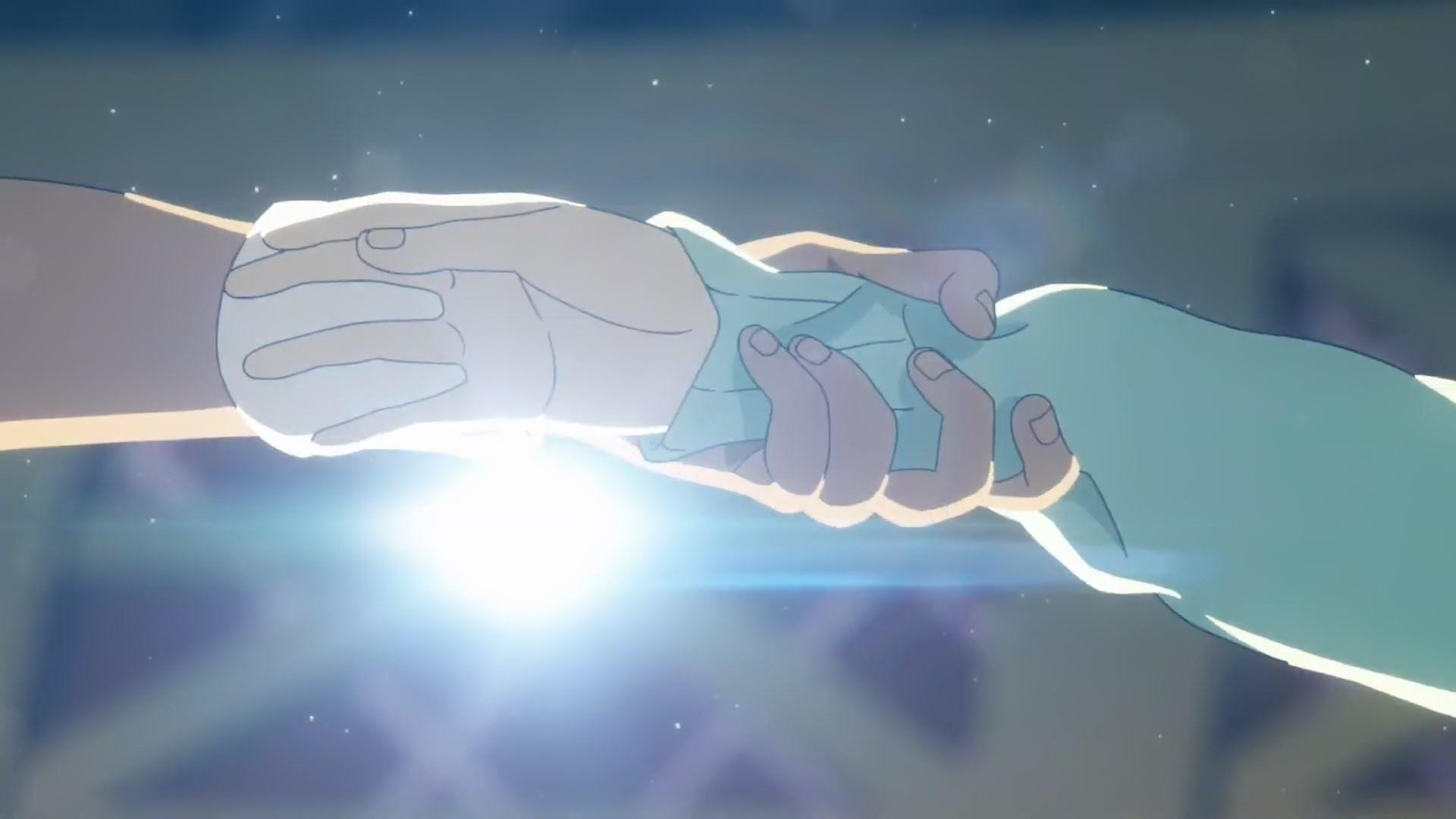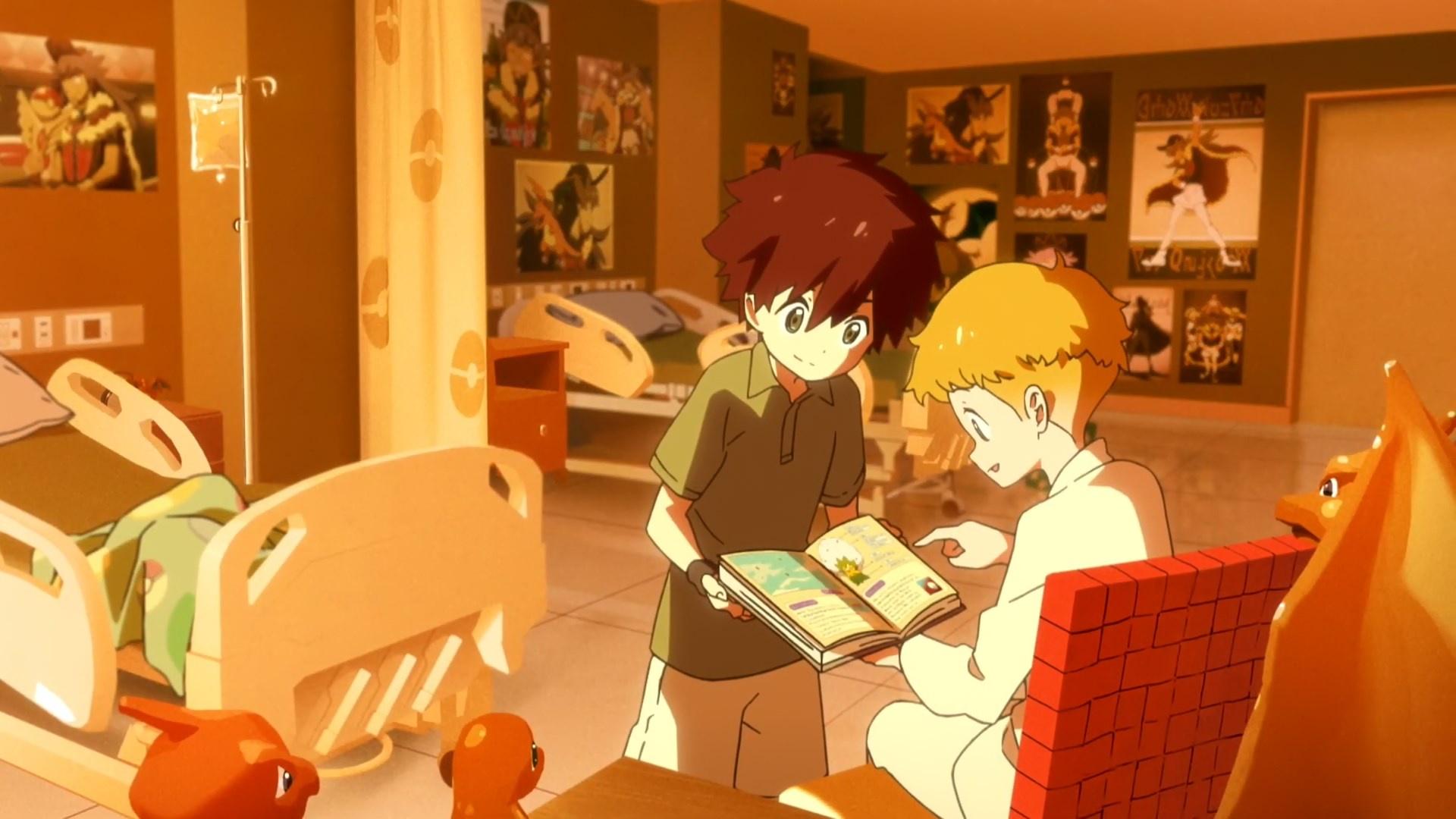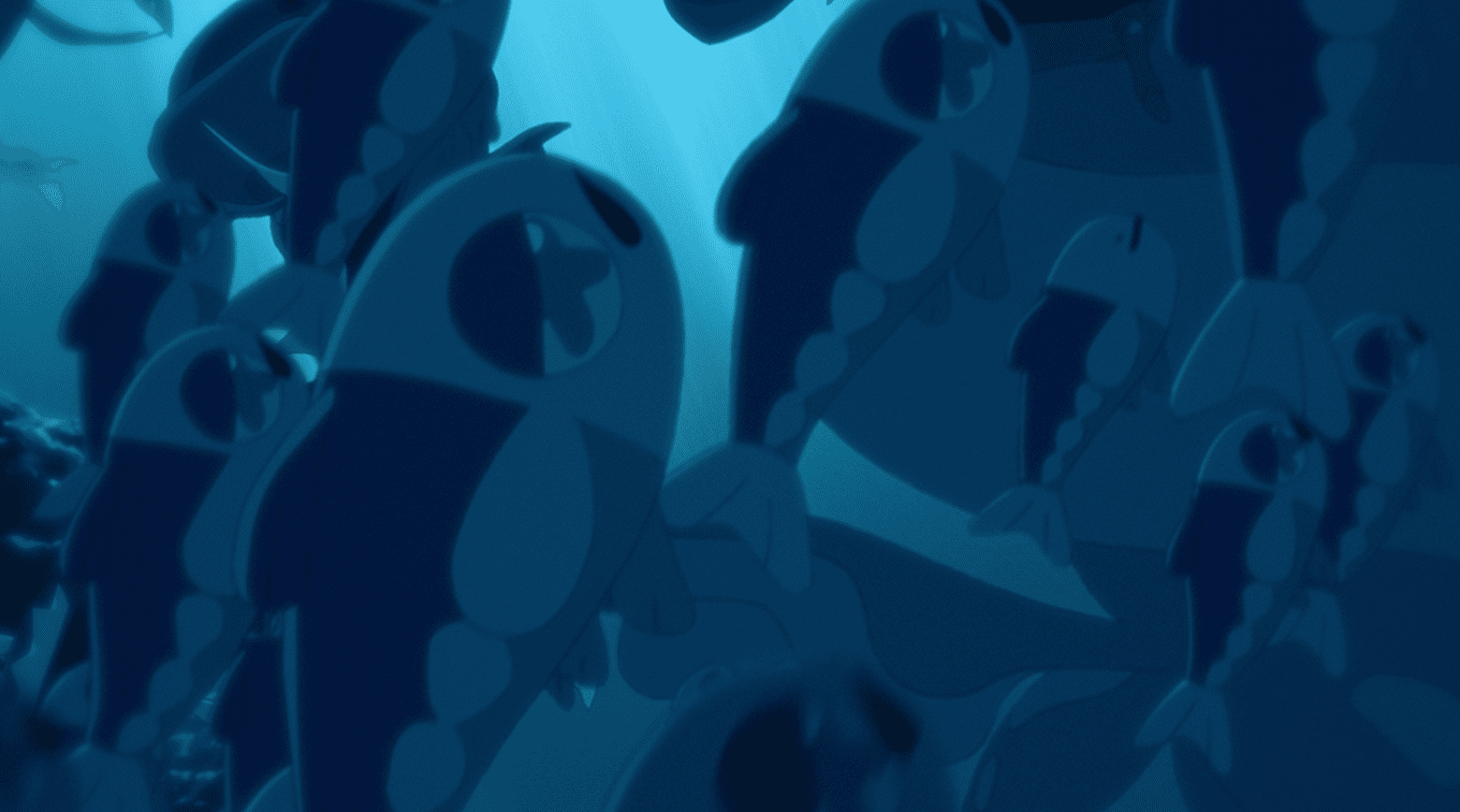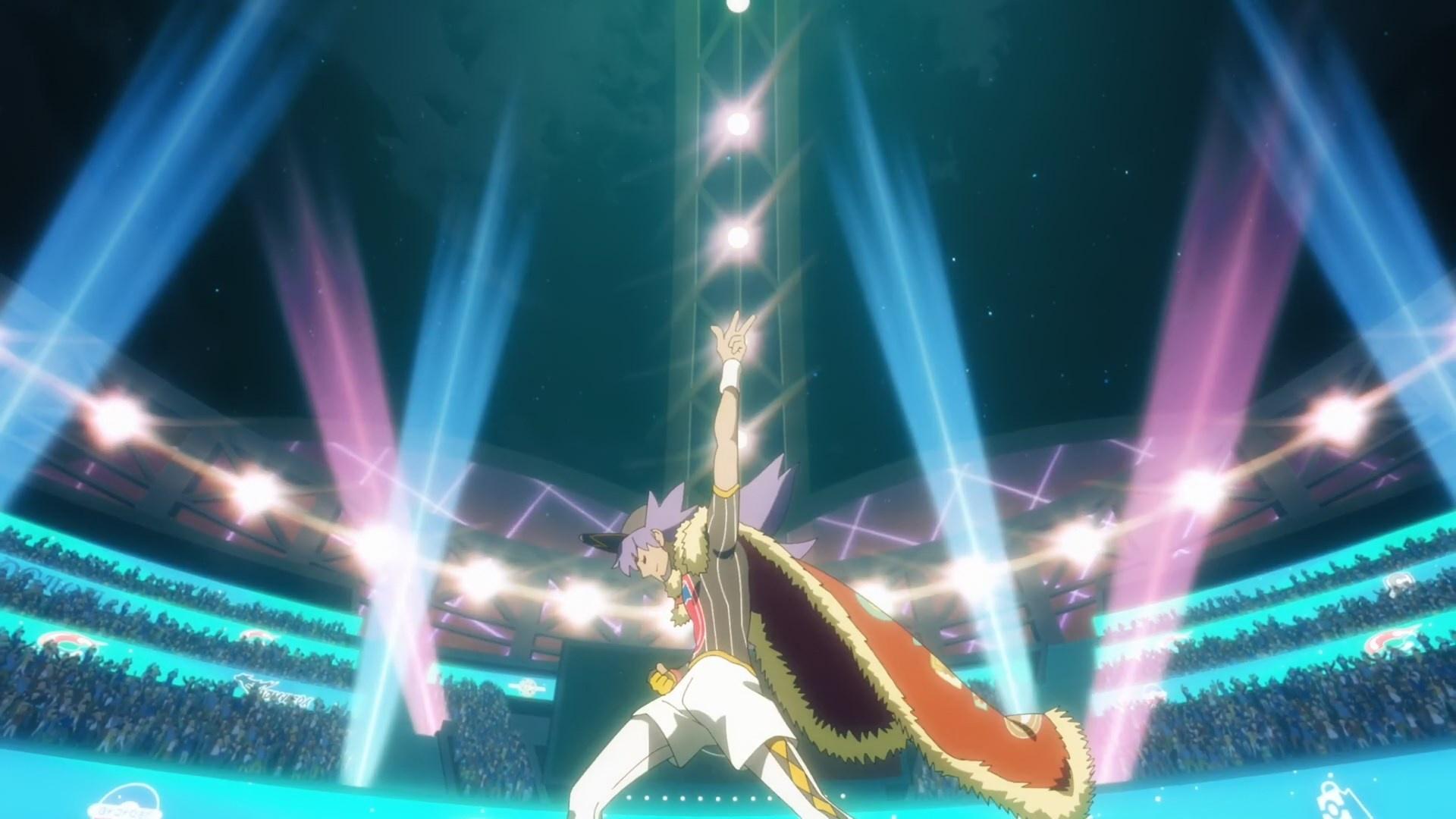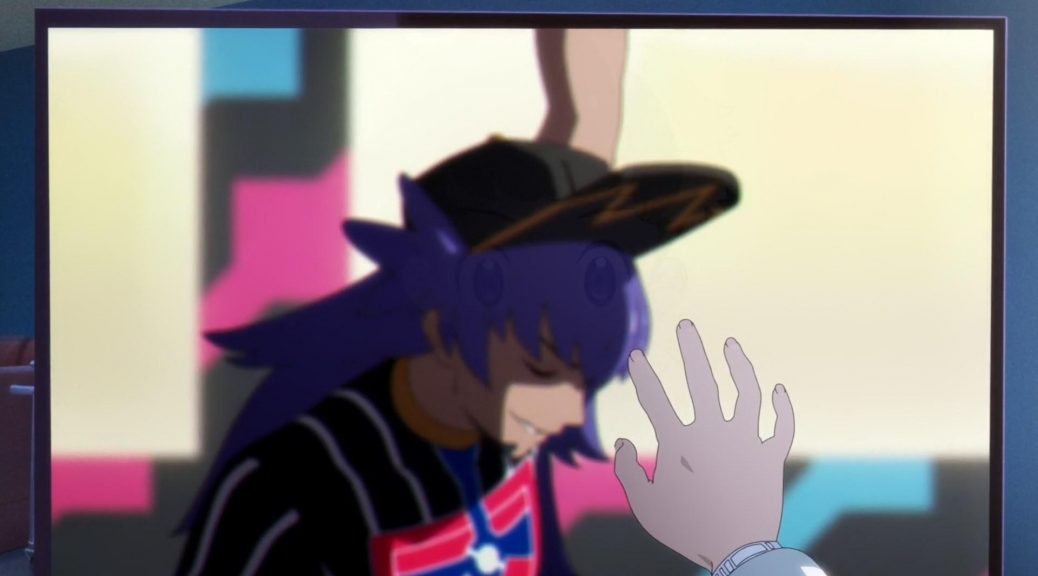
Pokemon Twilight Wings Interview: Series Director Shingo Yamashita & Assistant Yoh Watanabe
If Pokemon: Twilight Wings left you wanting for more information about its production, this interview with series directorSeries Director: (監督, kantoku): The person in charge of the entire production, both as a creative decision-maker and final supervisor. They outrank the rest of the staff and ultimately have the last word. Series with different levels of directors do exist however – Chief Director, Assistant Director, Series Episode Director, all sorts of non-standard roles. The hierarchy in those instances is a case by case scenario. Shingo Yamashita and his assistant Yoh Watanabe might address that need, as they talk about their creative approaches and goals, hidden secrets, and the Pokemon memories that fueled it all.
Participants:
- Shingo Yamashita
- Yoh Watanabe
Interview originally published on the official Pokemon website before the release of the last episode of Twilight Wings, as part of a series covering its core staff. Translated by bitmap.
— Please tell us what specific anime production duties you were responsible for as the series directorSeries Director: (監督, kantoku): The person in charge of the entire production, both as a creative decision-maker and final supervisor. They outrank the rest of the staff and ultimately have the last word. Series with different levels of directors do exist however – Chief Director, Assistant Director, Series Episode Director, all sorts of non-standard roles. The hierarchy in those instances is a case by case scenario. and assistant director of Pokemon: Twilight Wings.
Yamashita: The director is the one who decides on the direction that a series will take. In other words, your job is to tell everyone how they should go about making the anime, and then make sure that everyone is doing as you asked. If you’re good at giving instructions and it all gets carried out perfectly, there’s no need for you to do anything. So the less work you have to do, the better you are as a director. I’m always running around with my hands full, which is proof that I’ve still got a long way to go (laughs).
Watanabe: It’s a bit difficult to explain my duties as assistant director, as it tends to change based on directorial style and the nature of the production. Generally, it involves performing a number of tasks, from sharing everyone’s progress, to relaying instructions to all of the departments. Yamashita is actually a multi-talented individual who can do just about anything, so I’m always learning new things from him.
— Director, I hear you’re especially particular when it comes to the drawings. Is that due to your background as an animator?
Yamashita: That’s right. The director usually doesn’t fix up individual drawings. But having started out as an animator, I can’t break the habit of wanting to have the last say with corrections when we’re checking the key animationKey Animation (原画, genga): These artists draw the pivotal moments within the animation, basically defining the motion without actually completing the cut. The anime industry is known for allowing these individual artists lots of room to express their own style..
— What do you mean by checking the key animationKey Animation (原画, genga): These artists draw the pivotal moments within the animation, basically defining the motion without actually completing the cut. The anime industry is known for allowing these individual artists lots of room to express their own style. exactly?
Yamashita: The way that Japanese animation is usually produced today is that you start from the layout or rough key animationKey Animation (原画, genga): These artists draw the pivotal moments within the animation, basically defining the motion without actually completing the cut. The anime industry is known for allowing these individual artists lots of room to express their own style., where you decide on the basic composition of the shot, as well as how everything will move or be placed in broad strokes. From there, the animation director will make corrections to the drawings, which gets sent back to the animators, who produce what we call the key animation—sometimes referred to as 2nd key animationKey Animation (原画, genga): These artists draw the pivotal moments within the animation, basically defining the motion without actually completing the cut. The anime industry is known for allowing these individual artists lots of room to express their own style. at that stage. Those get looked over once more by the episode director or the animation director, after which it’s sent for in-betweening and coloring. There’s basically no turning back after you enter the in-betweening stage, so that checking stage is your final opportunity to make changes. Usually, the director will check for mistakes and let everything else through by that point, but I find myself coming up with new ideas and adding more materials anyway, which just creates more work for myself… (laughs)
— Did you do this for episodes 1 through 6 as well?
Yamashita: This really only applies to the cases where I acted as the episode director as well. For Twilight Wings, other than myself, we had 4 other people taking on the role of director and in charge of their respective episodes. For the ones where I was not responsible for the episode directionEpisode Direction (演出, enshutsu): A creative but also coordinative task, as it entails supervising the many departments and artists involved in the production of an episode – approving animation layouts alongside the Animation Director, overseeing the work of the photography team, the art department, CG staff... The role also exists in movies, refering to the individuals similarly in charge of segments of the film., I decided to largely leave things up to them, and let their own styles shine through. On the other hand, I was the episode director for #01, #04, and #07, so I was involved in various aspects for those, as usual.
— Looking at the comments on YouTube and elsewhere, it feels as though that attention to detail did not go unnoticed by the fans.
Yamashita: Well, obsessing over it too much can be counterproductive too (laughs). But I always end up wanting to take special care when it comes to the drawings, so there are lots of times where I tinker with them to the very end. Watanabe over here handled the fifth episode, and you can really feel his touch there too. This goes of course for the production as a whole, but he got a lot of praise for the art as well, looking at the reactions.
Watanabe: Unlike director Yamashita, I come from a production background and can’t draw; I simply conveyed how I wanted it to look in my instructions to the animators, who then did an outstanding job bringing it to life. There wasn’t much for me to correct in the end, and everything came back looking solid, which is all thanks to the animators’ skill.
— Were you familiar with Pokemon before this? It would be great if you could share your favorite Pokemon, your memories of the franchise, or any Pokemon-related anecdotes that stand out.
Yamashita: I believe that it was in my first or second year of elementary school when Pokemon Red and Green came out. I remember buying it at the time, and was part of the generation that has very fond memories of those games. As for a memory that stands out, after battling the Elite Four in Red and Green, there’s the part where you face off against your rival. Your rival’s Pidgey evolves into Pidgeotto, then Pidgeot during your journey through the game. When Pidgeotto evolves into Pidgeot, the sprite becomes much larger. On top of that, there’s the climactic music that plays during that final battle, and Pidgeot’s cry as it comes out. At that moment, I swear I could feel the wind dramatically blowing back my hair (laughs). I don’t think Pidgeot is actually supposed to be that big, but the music and the sound effects made it feel huge back then.
Episode #07 of Pokemon: Twilight Wings features a Dynamax Battle, and I wanted to recreate the same feeling from that time of innocence with that battle. Also, I just could not catch a Tauros in the Safari Zone (laughs). All of my friends had caught one, and I was the only one that had not, so I ran home crying and kept on playing. I never ran into a Tauros in the end, and cried for real there (laughs). But even that’s all a part of why Red and Green stand out in my mind the most.
Watanabe: I was a part of the same generation that started playing from Pokemon Red and Green. My brother had Red, and I had Green. Even back then, I feel like Pokemon was a means of communication. I had ended up switching schools, but even at my new school, everyone was talking about it. Also, they had the Game Link cables back then. It was a completely different experience based on whether you owned a cable or not.
Yamashita: Oh yeah, they did! I never owned one, though.
Watanabe: You would drop by a friend’s house after school, enjoy some snacks, and use the cable to trade Pokemon… Back then, it would be Alakazam and Machamp.
Yamashita: Oh, that takes me back!
Watanabe: And thus Pokemon ended up being the reason for many late nights (laughs).
— Let’s go back to Twilight Wings, which is presented in an anthology format. Is there a theme or concept that unites each episode?
Yamashita: The general idea was to add snippets of foreshadowing to build up to the story of Tommy and John—the boys in the hospital—as the main event, while also serving as brief, self-contained introductions to the charming Gym Leaders. We wanted the direction for each episode to feel different too, and I think you’ll find that to be the case for episodes #01 through #06.
For one, in episode #05, Oleana’s emotions are a bit harder to read when compared to the ones that came before. Oleana is an internally complex character, so it was extremely difficult to come up with an emotionally resonant story that could still be easily understood. One of our priorities was to make sure that fans would notice those emotional beats without spelling everything out for them. And that’s all thanks to the assistant director over here; it was Watanabe who made that episode come to fruition wonderfully, so I consider it a rousing success (laughs).
For another example, there’s episode #03, which presents Hop and Wooloo in a style outside my wheelhouse. It intentionally leans towards comedy in a manner more akin to the Pokemon TV series up to now. I thought that cheery, bucolic atmosphere would be a perfect fit for Hop’s character, and that having an episode like this would show the breadth of the world we’re working with. We have some serious developments and catch glimpses of the more cruel aspects, but there are also places of warmth in this world as well. My intent was to have episode #03 put into relief the circumstances of John and Tommy, who can’t take part in Pokemon battles due to their illness and do not envision bright futures for themselves.
The idea was to use composition and editing to represent the various personalities, perspectives, and sets of value at play. Hop has the league champion as his brother, and depending on how you look at it, you might say he’s had a hard upbringing. But he’s probably never doubted the idea that he would become a trainer and follow in his brother’s footsteps. The beginning of episode #03 has a scene where Hop watches the same match seen in episode #01, but here the music is cheerful in tone and the room is brightly lit with warm, natural lighting. We worked on those scenes in episodes #01 and #03 with this contrast in mind.
— So there was a conscious decision to have pieces like these connect when you watch the series as a whole.
Yamashita: That’s right. It’s like what they say about seeing the forest for the trees. One of the appeals of serialized works like this is having parts that you can’t fully appreciate from just watching a single episode in isolation, so we tried to incorporate this idea in several ways throughout the series.
— The focus characters change with every episode, but they all feature the Corviknight taxi. Did you include it as another way of connecting the series as a whole?
Yamashita: We had wanted to include the Flying Taxis pulled by Corviknights as a way to connect the world of Galar ever since the initial planning stages, and at first we had come up with a plot revolving around that. Adding onto that, we ended up with the recurring pattern throughout Twilight Wings where the taxi driver would always end up asking the focus characters questions like, “Where are you headed to?” or “What are you doing in a place like this?”, which we came up while brainstorming the script.
— Pokemon: Twilight Wings is based on the Nintendo Switch games Pokemon Sword and Shield. As a result, was there anything you made sure to watch out for or take special attention with while producing the anime?
Yamashita: Something we took great care with is trying not to disappoint the fans of the original games. But we’re not just making a one-to-one recreation, so it was tricky, yet rewarding to strike the balance between doing what we wanted on a writing and production level while staying faithful to the in-game universe. To be honest, there are parts of the final episode that I feel might straddle that line… (laughs nervously) We’re working hard right now on production as we try and imagine how it will be received!
— John and Tommy, who are original characters for the series, are quite charming. What did you focus on in the process of coming up with their characters?
Yamashita: If I had to say one way or another, I’m actually the kind of person who usually ends up disappointed when an anime adaptation adds original characters.
I think that there will always be some resistance from the viewers when a character who was not in the original suddenly shows up on screen. To take it a bit further, we only had 5 minutes in every episode of Twilight Wings to establish everything, so we had kind of given up on featuring your typical average character (laughs). Normally, you would make a character stand out by building on them over time by placing them on different situations and through their dialogue. Given the circumstances, though, we thought it would be hard to directly convey everything about John and Tommy, in terms of their personalities or their relationship with each other.
With that in mind, we made it so that for example, episode #06 serves as a response to episode #01, while episode #07 serves as a response to the preceding one. So at the time of this interview (before the premiere of episode #06), there are many aspects of John and Tommy’s character that you haven’t seen yet. I hope you’ll keep those unresolved pieces in the back of your mind, and look back at it in the end once everything is clear. There wasn’t much time between the initial stages and the point where the first draft of the script was done, so there are a lot of places where we made later revisions to the characters as we talked everything through from start to finish.
— From the episodes currently available, are there any little touches you added or backstories to things on screen that viewers might have missed while watching?
Watanabe: Everyone ended up seeing through all of the things I tried to set up (laughs).
Yamashita: (Laughs) As for me, I think it’s interesting when I read viewers’ reactions, and end up noticing something new from my own work. It’s quite the happy discovery. There are times where I unconsciously end up including details. While I’m directing, often I don’t intentionally try to do something a certain way, but it makes sense for it to happen that way in my head, and so you end up catching a glimpse into your inner thought process. It really makes me happy when people catch on to that.
There are a lot of times when a director is working at the unconscious level, and even though it’s not spelled out for you, the scene wouldn’t be what it is without that underlying idea. So I’m happiest when fans end up taking notice. Episode #05 makes use of a number of such devices courtesy of Watanabe. I think everyone caught on to what he was trying to do with the Mr. Rime scenes.
Watanabe: That’s right. To be honest, that started from the simple desire to put Mr. Rime somewhere in the episode… (laughs). We ended up expressing what Oleana was feeling through its tap dancing.
Yamashita: That was really good!
Watanabe: I don’t want to say too much in case of spoilers, but despite the short runtime and the small number of cuts, we tried to include at least one Pokemon or character from the game in every single shot where possible. I wouldn’t say we did it out of whimsy, but we did want them to get as much screen time as possible from a fan service perspective. I hope you try and keep an eye out for them.
— Rewatching the anime from that angle sounds like a fun, different way to enjoy it.
Yamashita: However, while I don’t think it hurts anyone to point out things like the Ditto mixed in with all of the Wishiwashi in episode 4, I try not to touch on the parts that are more important to the story, since it takes the fun out of things (laughs).
— Hopefully everyone can notice those parts for themselves on a rewatch.
Yamashita: And even if you don’t notice anything, it won’t affect your enjoyment at all. I think that goes as well for the themes of Twilight Wings. We tried to make it so that you can understand the story without picking up on those details, but if you do then it deepens your understanding.
— Can you highlight some of those details to look forward to in the finale?
Yamashita: It’s hard to say because talking about the highlights can end up being spoilers… I think one of the best parts about the Pokemon anime are the memorable battles. However, Pokemon: Twilight Wings starts off not really focusing too much on them. Even though John is a huge Leon fan, we created the series and purposefully chose not to feature the battles. John wants nothing more than to experience that in person, but it’s a dream that has been unfulfilled. In episode 7, John gets to finally go to a stadium, and I think the real highlight is the intense Pokemon battle that takes place, which may just be the most impressive to date.
— As the assistant director, is there anything else you want to highlight?
Watanabe: Honestly, I think Mr. Yamashita has said everything I wanted to… Please watch episode 7 (laughs).
Yamashita: I hope you can experience John’s dreams with him, and get a taste of how impactful Leon’s Dynamax Battle is up close in that stadium!
Watanabe: It really is a fitting way to finish the series. You’ll get to see pretty much all of your favorite characters as well.
Yamashita: That’s true. You could say that’s a highlight in and of itself!
— To wrap up, if you could end with a message for all of the Pokemon and the Twilight Wings fans out there.
Watanabe: Thank you to all the fans out there playing Pokemon Sword and Shield. For those who have yet to try it, I hope Pokemon: Twilight Wings can serve as an opportunity to give the game a shot as well. There’s nothing that would make me happier as the director than for this series to serve as an opportunity to love the characters even more, to continue playing the game in the future, and to share the fun with all of your friends.
— What about the director himself?
Yamashita: We worked on Pokemon: Twilight Wings with the hope of creating something that the fans out there can enjoy and dig deeper into, to the point of reading too much into it. I hope everyone who loves Pokemon takes the chance to check out this series.
If you love Pokemon, I hope you’ll find the series to be rewarding on subsequent revisits, as something that can be enjoyed on multiple levels. Please enjoy watching until the very end.
Support us on Patreon to help us reach our new goal to sustain the animation archive at Sakugabooru, SakugaSakuga (作画): Technically drawing pictures but more specifically animation. Western fans have long since appropriated the word to refer to instances of particularly good animation, in the same way that a subset of Japanese fans do. Pretty integral to our sites' brand. Video on Youtube, as well as this SakugaSakuga (作画): Technically drawing pictures but more specifically animation. Western fans have long since appropriated the word to refer to instances of particularly good animation, in the same way that a subset of Japanese fans do. Pretty integral to our sites' brand. Blog. Thanks to everyone who’s helped out so far!
